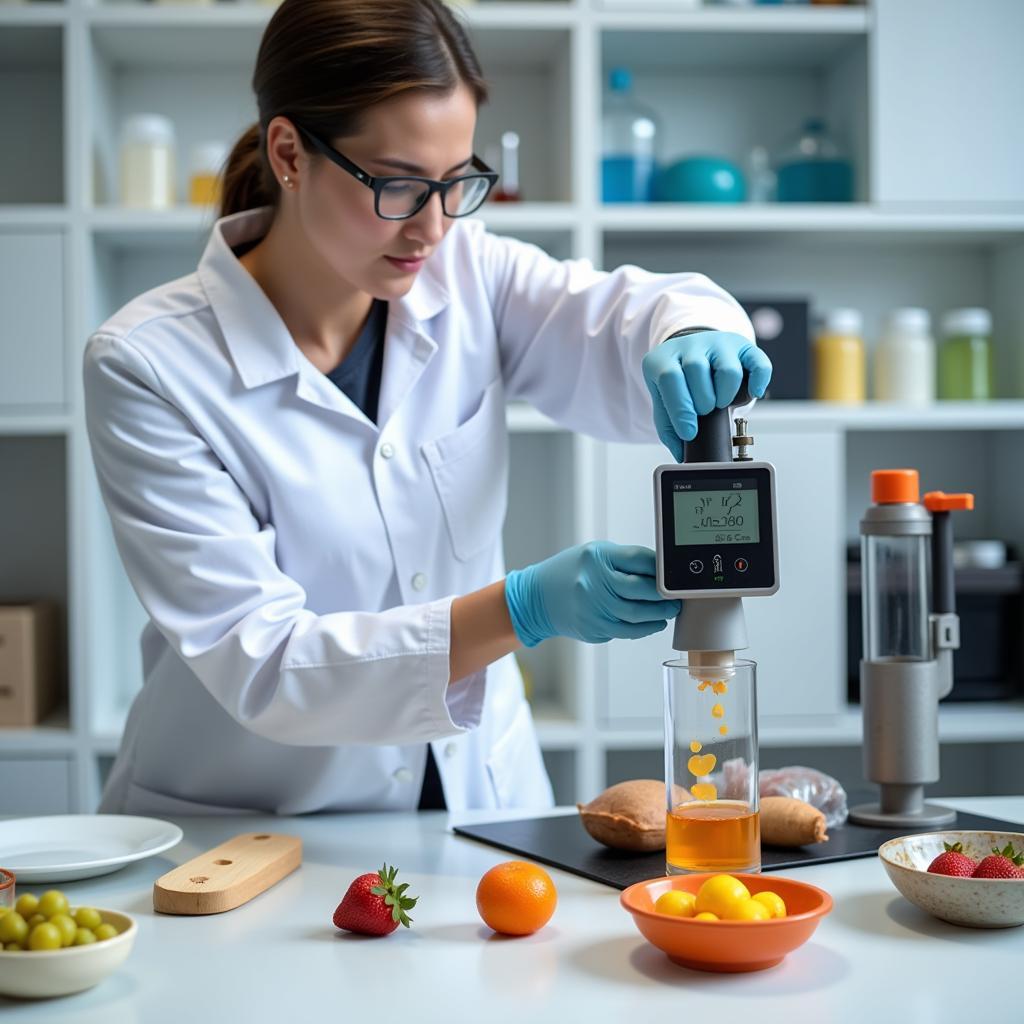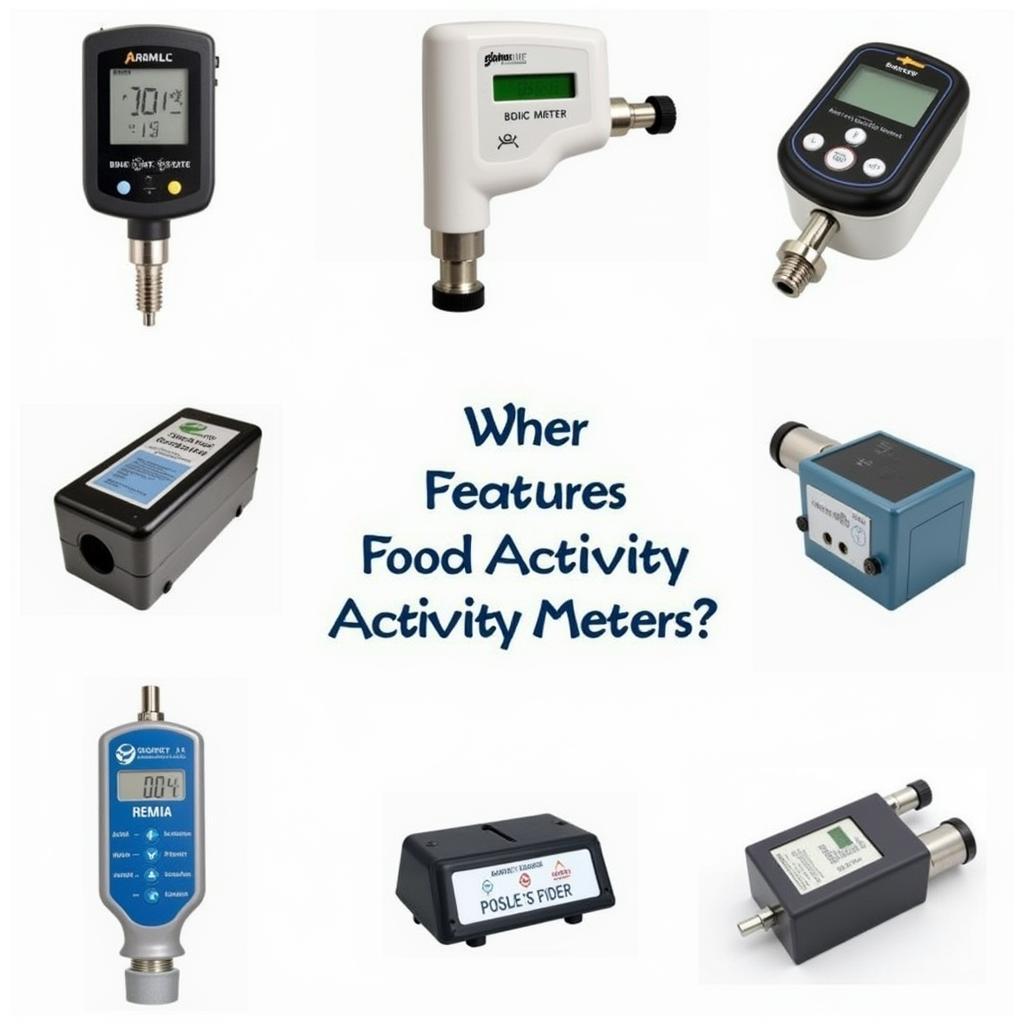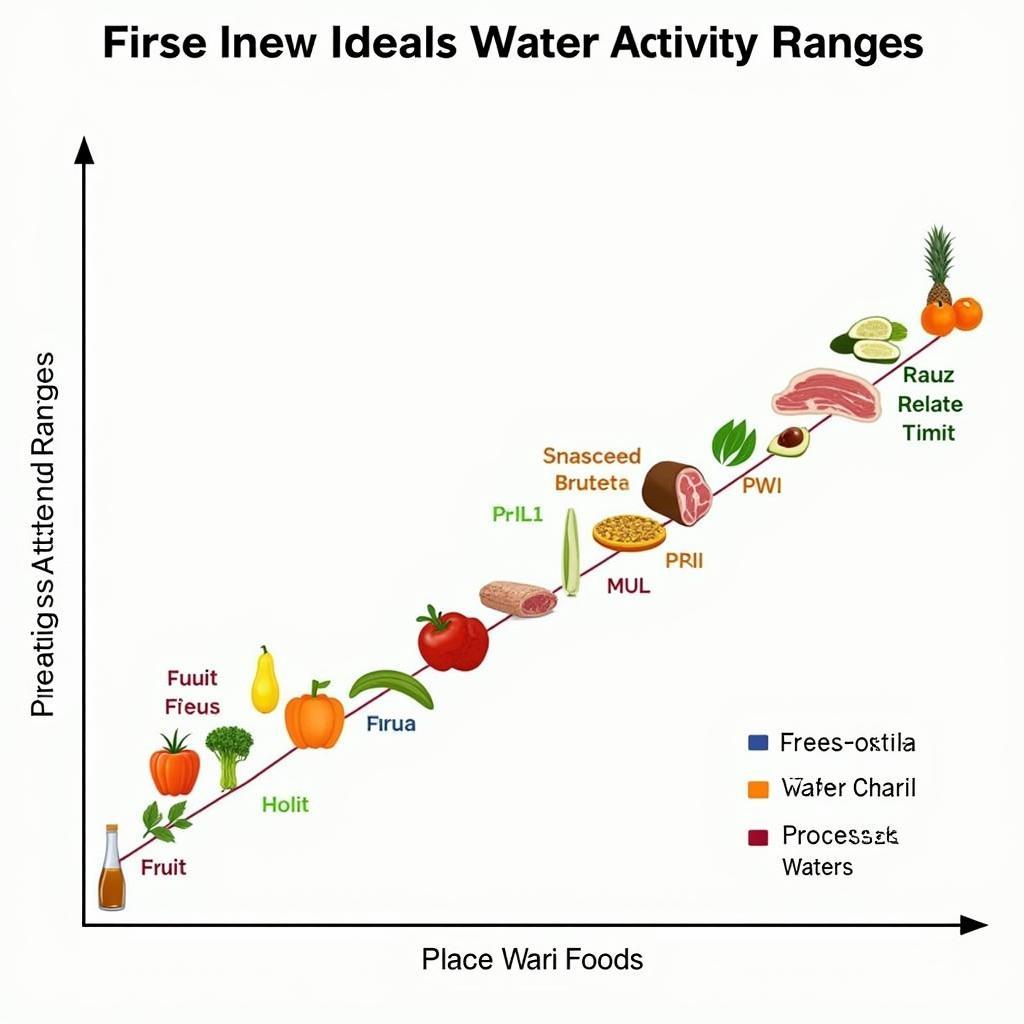A Water Activity Meter For Food is an essential tool for anyone involved in food production, processing, or storage. It measures the amount of unbound water available for microbial growth and chemical reactions, playing a crucial role in determining a food product’s shelf life and safety. Understanding how to use and interpret the readings from a water activity meter can significantly impact the quality and longevity of your food products.
Ensuring food safety and extending shelf life are paramount in the food industry. This requires precise control over various factors, one of the most critical being water activity. And that’s where a water activity meter comes in. It provides a crucial measurement that goes beyond the simple water content. A water activity meter for food quantifies the “free” or “available” water in a product, which directly influences microbial growth and spoilage. This measurement differs from moisture content, which represents the total water present, including both bound and unbound water.
Why is a Water Activity Meter Important?
A water activity meter helps prevent spoilage, maintain quality, and ensure the safety of food products by accurately measuring available water. This measurement is expressed as a value between 0 and 1, with 1 representing pure water. The lower the water activity, the less likely it is for microorganisms to thrive and spoil the food. Using a water activity meter allows food producers to optimize their formulations and processing parameters to achieve desired shelf life and safety.
For instance, if you’re producing sturgeon fish food, accurately measuring water activity is critical to maintaining its nutritional value and preventing spoilage. Similarly, the right water activity levels in dr bassleer fish food can ensure optimal palatability and long-term stability.
 Water Activity Meter Being Used in Food Testing Laboratory
Water Activity Meter Being Used in Food Testing Laboratory
How Does a Water Activity Meter Work?
Most water activity meters operate based on the principle of measuring the relative humidity of the air surrounding a food sample in a sealed chamber. The water activity of the food sample equilibrates with the relative humidity of the air, and this humidity is then measured and displayed as the water activity value. This allows for a precise determination of how susceptible a food product is to microbial growth.
 Various Types of Water Activity Meters for Food Testing
Various Types of Water Activity Meters for Food Testing
Using a Water Activity Meter Effectively
Accurate readings depend on proper usage and calibration of the meter. Before testing, ensure the instrument is calibrated and the sample is prepared correctly. The sample should be representative of the entire batch and handled to avoid contamination or moisture loss. After placing the sample in the meter’s chamber, allow sufficient time for equilibration before recording the reading.
Just as important as water activity is the type of food you choose for your pets. Consider exploring options like cat fish food or even something specific like sturgeon fish food to meet their unique dietary needs.
Interpreting Water Activity Values
Understanding the significance of the water activity value is key to its application. Different food categories have specific water activity ranges considered safe and optimal for preservation. Comparing the measured value with established guidelines helps determine the potential for microbial growth and spoilage, enabling informed decisions about processing and storage.
Dr. Annabelle Carter, a Food Science expert, emphasizes the importance of this tool: “A water activity meter is indispensable in preventing foodborne illnesses. By accurately measuring available water, we can significantly reduce the risk of microbial contamination and ensure consumer safety.”
 Chart Showing Water Activity Levels for Different Food Groups
Chart Showing Water Activity Levels for Different Food Groups
Maintaining Your Water Activity Meter
Regular maintenance and calibration are crucial for accurate and reliable results. Cleaning the sensor and chamber after each use prevents residue buildup and cross-contamination. Periodic calibration with known standards ensures the meter remains within acceptable accuracy limits.
Have you ever considered the adhesive used in food packaging? A food safe adhesive for plastic is crucial to ensuring the integrity and safety of packaged food products. Similarly, ensuring the proper water activity of plant fertilizers like maxsea plant food contributes to their effectiveness and longevity.
Conclusion
A water activity meter for food is a valuable investment for anyone involved in food processing and storage. By accurately measuring available water, you can optimize product formulations, extend shelf life, and ultimately ensure the safety and quality of your food products.
FAQ
- What is the difference between water activity and moisture content? Water activity measures the “free” water available for microbial growth, while moisture content measures total water, including bound and unbound water.
- How often should I calibrate my water activity meter? Calibration frequency depends on usage and model, but generally, monthly calibration is recommended.
- What factors affect water activity? Temperature, pressure, and the presence of solutes like salts and sugars can influence water activity.
- What are the acceptable water activity levels for different foods? Specific guidelines exist for various food categories, and consulting these resources is crucial for determining safe ranges.
- How do I store food products based on their water activity? Products with higher water activity require stricter storage conditions, often involving refrigeration or freezing.
- Where can I purchase a water activity meter? Water activity meters can be purchased from scientific equipment suppliers and online retailers.
- How do I clean my water activity meter? Refer to the manufacturer’s instructions for specific cleaning procedures and recommended cleaning solutions.
Situations where water activity meters are commonly used:
- Quality control in food processing: Ensuring product consistency and meeting regulatory standards.
- Research and development: Developing new food formulations and optimizing existing ones.
- Storage and warehousing: Monitoring water activity to prevent spoilage during storage.
- Packaging development: Selecting appropriate packaging materials to maintain desired water activity.
Related articles and resources on our website:
You might also find these articles helpful: Dr Bassleer Fish Food, Cat Fish Food, Maxsea Plant Food, Sturgeon Fish Food, and Food Safe Adhesive For Plastic.
Contact Us
For further assistance, please contact us at: Phone: 02437655121, Email: minacones@gmail.com, or visit our address at 3PGH+8R9, ĐT70A, thôn Trung, Bắc Từ Liêm, Hà Nội, Việt Nam. Our customer service team is available 24/7.